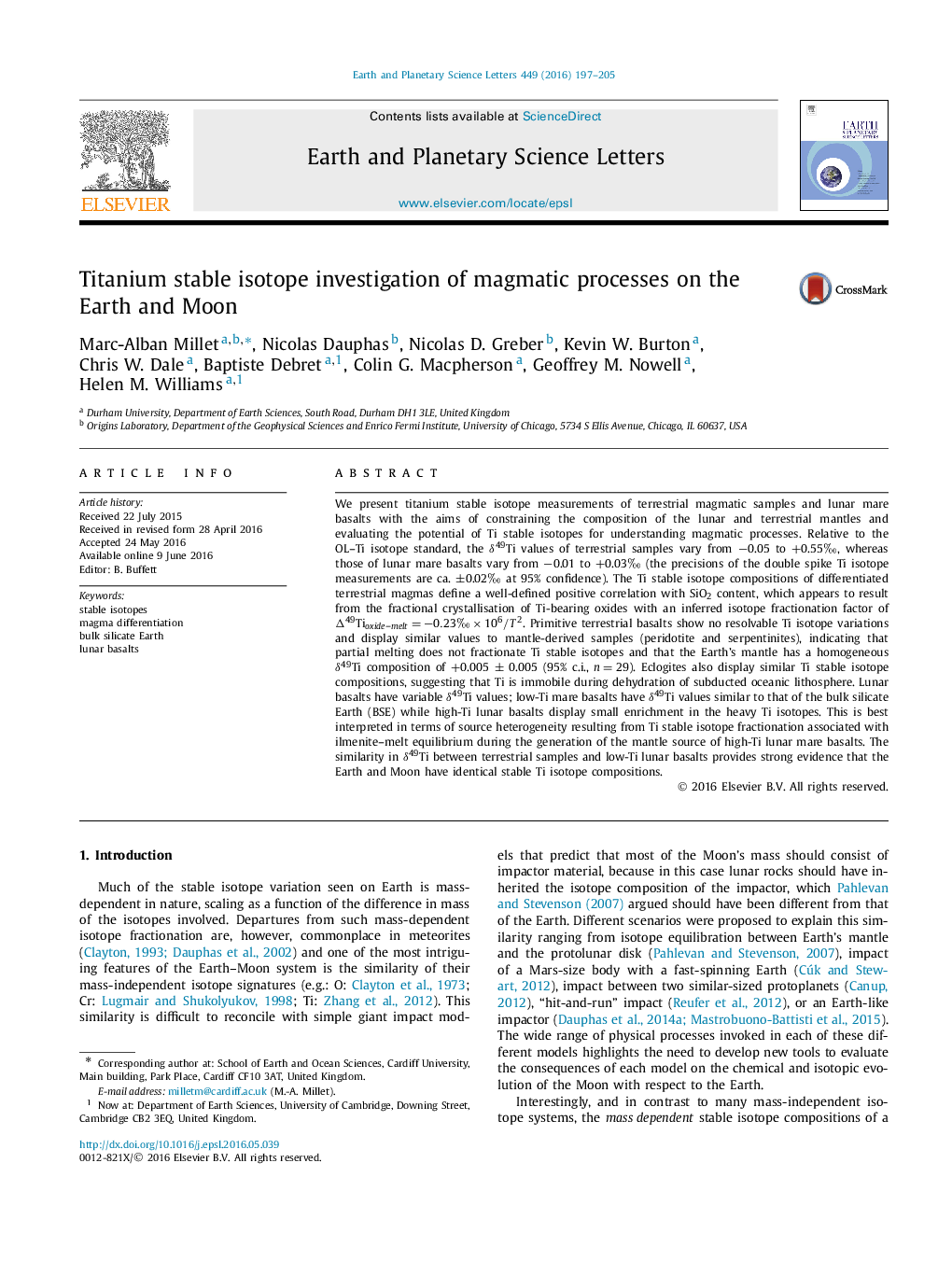| Article ID | Journal | Published Year | Pages | File Type |
|---|---|---|---|---|
| 6427384 | Earth and Planetary Science Letters | 2016 | 9 Pages |
â¢First study of the Ti stable isotope composition of terrestrial and lunar rocks.â¢Ti isotopes display large variations during magma differentiation.â¢The terrestrial and lunar mantles display similar mantle Ti stable composition.
We present titanium stable isotope measurements of terrestrial magmatic samples and lunar mare basalts with the aims of constraining the composition of the lunar and terrestrial mantles and evaluating the potential of Ti stable isotopes for understanding magmatic processes. Relative to the OL-Ti isotope standard, the δ49Ti values of terrestrial samples vary from â0.05 to +0.55â°, whereas those of lunar mare basalts vary from â0.01 to +0.03â° (the precisions of the double spike Ti isotope measurements are ca. ±0.02â° at 95% confidence). The Ti stable isotope compositions of differentiated terrestrial magmas define a well-defined positive correlation with SiO2 content, which appears to result from the fractional crystallisation of Ti-bearing oxides with an inferred isotope fractionation factor of ÎTioxide-melt49=â0.23â°Ã106/T2. Primitive terrestrial basalts show no resolvable Ti isotope variations and display similar values to mantle-derived samples (peridotite and serpentinites), indicating that partial melting does not fractionate Ti stable isotopes and that the Earth's mantle has a homogeneous δ49Ti composition of +0.005 ± 0.005 (95% c.i., n=29). Eclogites also display similar Ti stable isotope compositions, suggesting that Ti is immobile during dehydration of subducted oceanic lithosphere. Lunar basalts have variable δ49Ti values; low-Ti mare basalts have δ49Ti values similar to that of the bulk silicate Earth (BSE) while high-Ti lunar basalts display small enrichment in the heavy Ti isotopes. This is best interpreted in terms of source heterogeneity resulting from Ti stable isotope fractionation associated with ilmenite-melt equilibrium during the generation of the mantle source of high-Ti lunar mare basalts. The similarity in δ49Ti between terrestrial samples and low-Ti lunar basalts provides strong evidence that the Earth and Moon have identical stable Ti isotope compositions.
